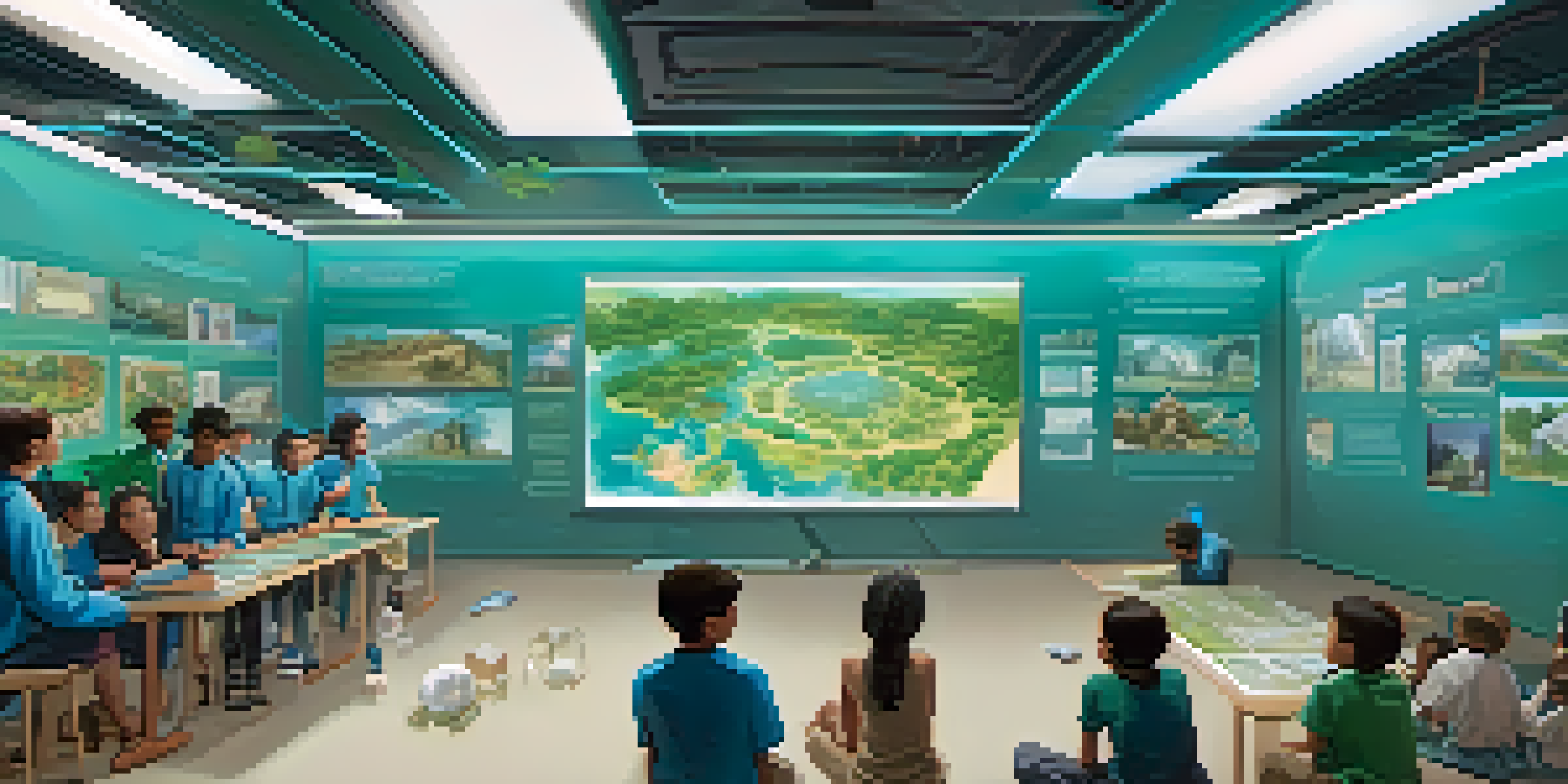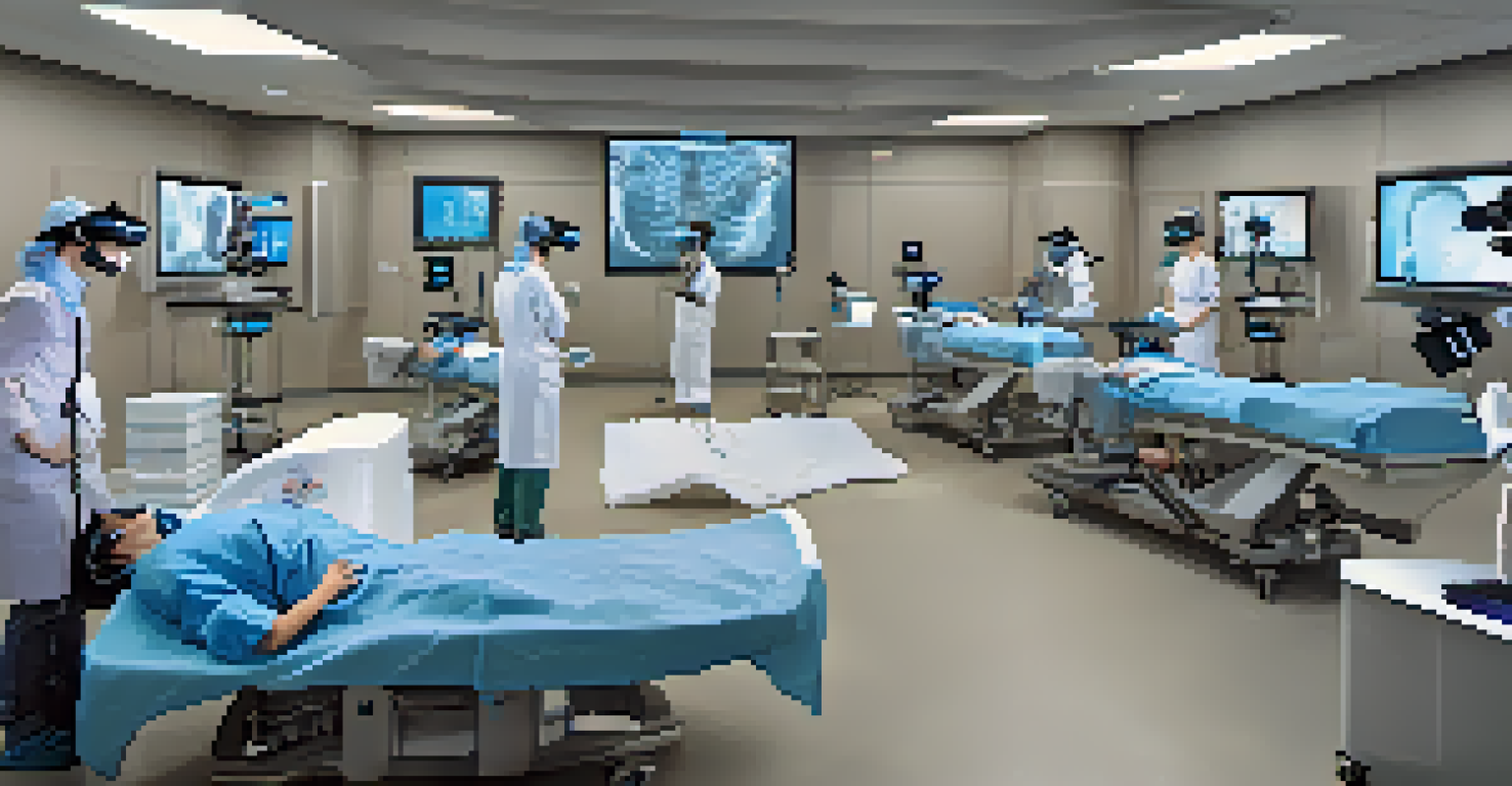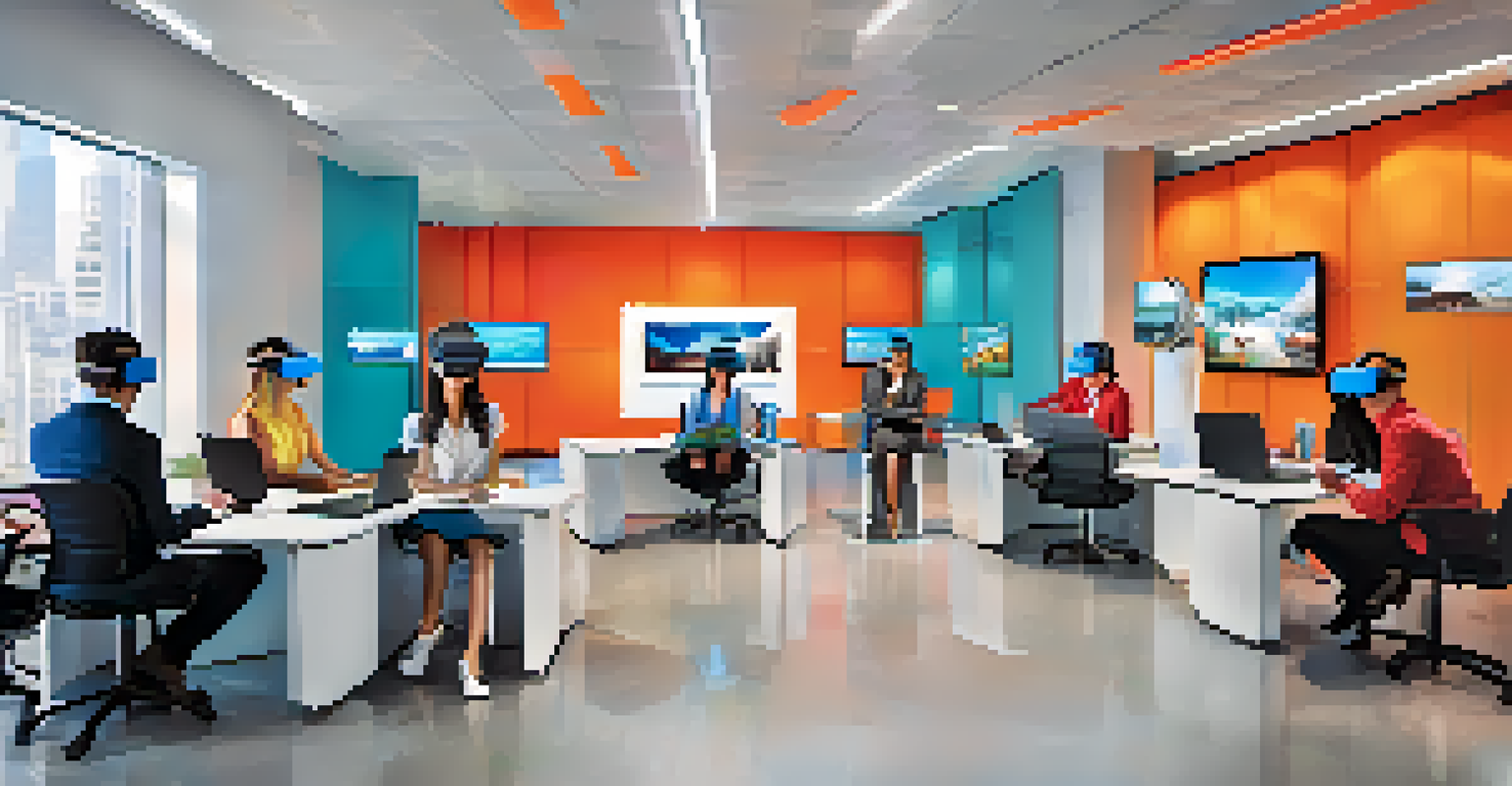The Evolution of Virtual Reality: From Gaming to Training Tools

The Birth of Virtual Reality: Gaming's Early Days
Virtual reality (VR) began its journey in the 1960s, but it wasn't until the 1990s that it started gaining traction in gaming. Early VR systems, like the Sega VR, aimed to immerse players in fantastical worlds, although the technology was limited and often left gamers feeling dizzy rather than dazzled. Despite its rocky start, the idea of stepping inside a game captured the imagination of developers and players alike.
Virtual reality is the next best thing to being there.
As technology progressed, so did the potential of VR in gaming. The advent of more powerful computers and better graphics led to the creation of immersive experiences that were previously unimaginable. Games like 'Doom VR' and 'Half-Life: Alyx' showcased how VR could turn gaming into a fully engaging and interactive experience, making players feel as though they were part of the action.
This evolution laid the groundwork for VR's expansion beyond gaming. Developers started to see the potential for VR in various fields, recognizing that the immersive nature of the technology could be applied to training, education, and even therapy.
Breaking Barriers: Advancements in VR Technology
The rapid advancements in technology played a crucial role in shaping the VR landscape. With the introduction of more sophisticated headsets and controllers, like the Oculus Rift and HTC Vive, the user experience improved significantly. These devices not only enhanced graphics quality but also made interactions more intuitive, allowing users to physically engage with their virtual surroundings.

Moreover, the reduction in cost for high-quality VR equipment made the technology more accessible to a broader audience. This democratization helped fuel interest from developers across various industries, encouraging experimentation with VR beyond traditional entertainment. Businesses began to explore the potential of VR for training and skill development, recognizing its unique ability to simulate real-world scenarios.
VR Revolutionizes Gaming Experience
Virtual reality has evolved from its early, dizzying attempts in the 1990s to immersive gaming experiences that fully engage players.
As a result, we saw a surge in VR applications, from military training simulations to medical procedures. These examples showcased how VR could provide hands-on experience without the risks associated with real-life training.
Virtual Reality in Education: A New Learning Frontier
One of the most exciting applications of VR is its integration into the education sector. Imagine students exploring ancient civilizations or diving deep into the ocean without leaving their classrooms. VR makes these experiences possible, engaging students in ways that traditional teaching methods often cannot.
The future of education is not about the content, but about the context in which it is delivered.
Educators have started to embrace VR as a powerful tool to enhance learning outcomes. With programs designed for everything from history lessons to science experiments, students can interact with their subjects in immersive environments. This hands-on approach not only boosts engagement but also helps to reinforce understanding and retention of information.
Furthermore, VR facilitates personalized learning experiences, allowing students to learn at their own pace. This adaptability is particularly beneficial for students with different learning styles or challenges, making education more inclusive and effective.
VR in Healthcare: Transforming Medical Training
The healthcare industry has also recognized the value of VR, particularly in medical training. Traditional methods often involve lengthy textbooks and lectures, but VR allows medical students to practice procedures in a safe, controlled environment. This hands-on training is invaluable for building confidence and competence before they work with real patients.
For instance, VR simulations can replicate intricate surgeries, enabling students to visualize anatomy and practice techniques repeatedly. This method not only enhances skill acquisition but also significantly reduces the risk of errors in real-world scenarios. The feedback provided during these simulations helps budding doctors refine their skills in a way that books simply cannot offer.
Transformative Power of VR in Education
VR enhances education by allowing students to explore and interact with subjects in immersive environments, boosting engagement and understanding.
Additionally, VR is being used in patient treatment, offering therapeutic experiences for those dealing with anxiety, phobias, or PTSD. By immersing patients in calming environments or gradual exposure scenarios, healthcare professionals can help them confront and manage their fears more effectively.
Corporate Training: Elevating Professional Development
Corporate training is another area where VR has made significant inroads. Many companies are leveraging VR to enhance employee training programs, creating realistic simulations for various scenarios, from customer service interactions to emergency procedures. This immersive approach not only makes training more engaging but also helps employees retain information more effectively.
For example, a retail company might use VR to train staff on how to handle difficult customer interactions. By simulating real-life situations, employees can practice their responses and develop their skills in a low-stakes environment. This prepares them to handle actual customer scenarios with greater confidence and competence.
Moreover, VR can facilitate remote training, allowing companies to connect with employees across different locations. This flexibility not only saves time and costs associated with travel but also ensures that all staff receive the same high-quality training, regardless of where they are.
The Future of VR: Expanding Horizons
As we look to the future, the possibilities for VR are virtually endless. With ongoing advancements in technology, we can expect even more immersive experiences that blur the lines between reality and the virtual world. Innovations like haptic feedback gloves and full-body tracking could further enhance the sensation of presence, making virtual interactions feel even more real.
Moreover, as industries continue to explore the potential of VR, we may see its application in areas such as architecture, tourism, and even mental health therapy. For instance, architects could use VR to walk clients through their designs before construction begins, allowing for real-time feedback and adjustments.
VR's Impact on Healthcare Training
In healthcare, VR provides invaluable hands-on training for medical students and therapeutic experiences for patients, significantly improving skill acquisition.
The growing interest in VR also means that more content and applications will be developed, catering to various needs and preferences. As a result, VR may become a staple in both personal and professional realms, reshaping how we learn, work, and interact with one another.
Addressing Challenges: The Road Ahead for VR
Despite its exciting potential, the journey of VR isn't without challenges. Issues like motion sickness, high equipment costs, and content availability still pose barriers to widespread adoption. Developers and researchers are continuously working to address these concerns, striving to create a more seamless and enjoyable VR experience for users.
Additionally, as VR becomes more ingrained in our daily lives, ethical considerations will come to the forefront. Questions about privacy, data security, and the impact of prolonged VR use on mental health will need to be addressed. It’s vital for developers and users alike to navigate these issues thoughtfully to ensure the responsible growth of the technology.

Ultimately, the future of VR will depend on collaboration among technologists, educators, and industry leaders. By working together to overcome challenges and expand the technology's applications, we can fully harness the potential of virtual reality to transform various aspects of our lives.